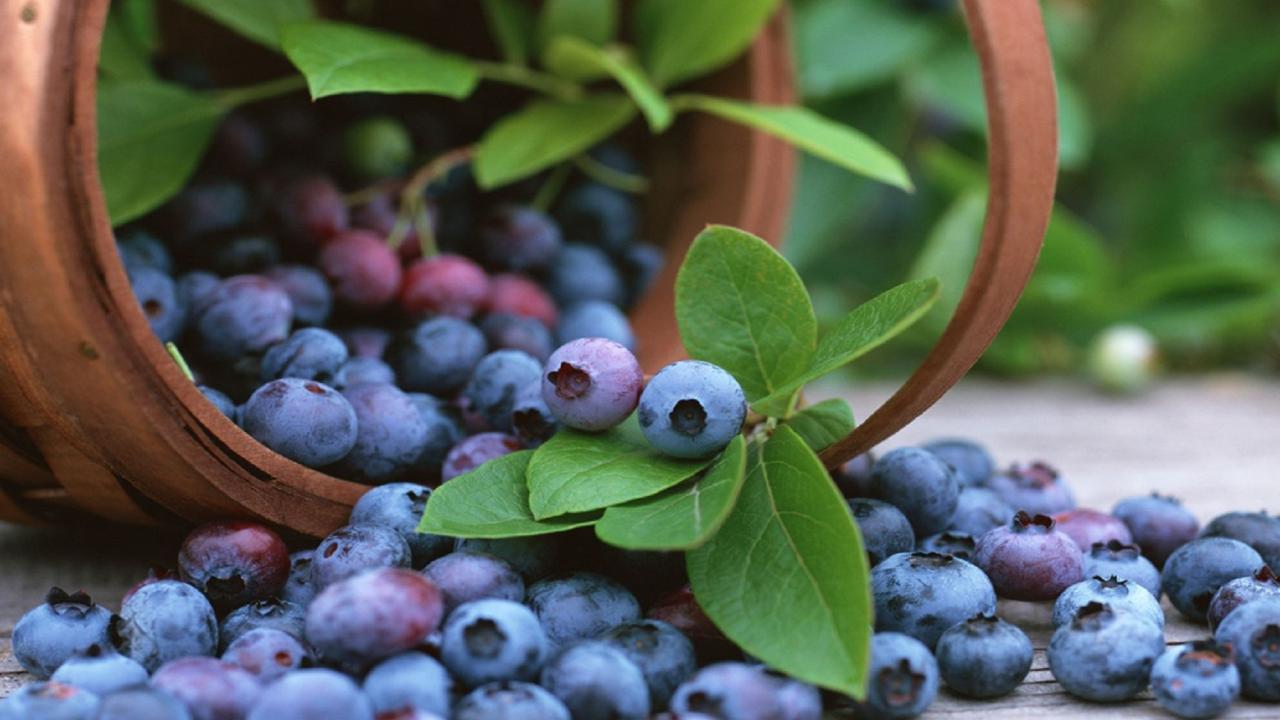
Peru has positioned itself as the number one supplier in the world, despite the fact that blueberries are fruits native to North America and recently introduced to the Andean country.
From being practically unknown in local agriculture, the blueberry has gained prominence in a few years and has become one of the main products of Peruvian foreign trade.
It is a fruit that we can currently see in all Peruvian supermarkets and there is no fruit market stall in the traditional supply centers of the cities of the Andean country where it is not offered, according to a report published in the Diario El Peruano. .
However, the blueberry is a wild berry native to North America, where it was collected for human consumption. Over time, its global production has become more technical and widespread due to its high demand. In the present century it arrived in the country to put down roots.
“In Peru, the first plantation that is recorded is in Arequipa, in 2008 it began with 10 hectares and 100,000 plants, and the majority collapsed shortly after planting,” says the Ministry of Agrarian Development and Irrigation of Peru ( Midagri) in a report on this product in which it details that its cultivation is very delicate and requires a process of preparation and modification of soil conditions, aspects that take time and that can make the difference between a successful plantation or one that fails. born dead
However, since that first cultivation experience in 2008, Peru has positioned itself as the world's number one exporter of blueberries, a fruit that at the beginning of this century was not part of the national agro-exportable offer.
Thus, Peru, from registering just over US$32 million in blueberry exports in 2010, achieved impressive growth, already in 2018 exceeding US$546 million and in 2023 it reached the important figure of US$1,679 million, according to figures from the Association of Exporters of Peru (Adex), thus positioning the Andean country as the main exporter of blueberries in the world in recent years.
ATTRACTIVE PRODUCT
But what makes consumption and therefore demand for blueberries in international markets so attractive? The Peruvian blueberry export and marketing association (ProArándanos) explains that it is a healthy food that helps release stress.
“It contains fiber, which helps maintain a healthy heart and controlled cholesterol levels, vitamin C to maintain a healthy immune system, vitamin K for the circulatory system, as well as manganese, which helps convert proteins, carbohydrates and fats. in energy.”
Likewise, it highlights that “blueberries are certified as heart healthy by the American Heart Association (AHA) Heart-Check food certification program.”
The blueberry is part of the ever-growing Peruvian agro-export offer, which in 2023, together with other products, has managed to reach 141 markets around the world. The main destination is the United States, a country that bought US$3,705 million from Peru in blueberries, grapes, asparagus, coffee and other products.
For her part, the Minister of Foreign Trade and Tourism, Elizabeth Galdo, stated that Peru is the ninth largest fruit exporter in the world and could become the eighth this year.
“During 2023, Peru positioned itself as the ninth largest fruit exporter in the world, with sales that amounted to US$5,681 million. Among the Peruvian fruits best positioned in the world are blueberries, avocados and grapes,” Minister Galdo stressed during the 22nd Adex Agro-Export Lunch.
PRODUCING REGIONS IN PERU
The main blueberry producing region in Peru is La Libertad, which has 46% of the area planted with this agricultural product, followed by Lambayeque (29%), Ica (6.8%), Lima (6.7%), Áncash (6.4%), Piura (5.3%) and Moquegua (0.4%). Likewise, 85% of the volume exported from Peru is made from August to December, according to ProArándanos statistics.
For its part, Midagri specifies that there are three types of blueberries: the blue one (Vacciniumcorimbosum), a bush that reaches 1.8 meters in height and has blue-black fruits, large and delicious, and is the most cultivated.
Then there is the black or uliginosum (Vacciniumuliginosum), which is very abundant at sea level and can even be grown in cold regions at more than 3,000 meters. The bush does not exceed half a meter in height. There is also the cranberry (Vacciniumvitis– idaea), which is widely used to make compotes and jams.
Regarding the varieties of blueberries grown in Peru, ProArándanos indicates that in 2022, 65 varieties were certified, a significantly higher number than the 13 certified in 2016.
MAIN BUYERS
In 2023, blueberries grown in Peru were exported to 44 international markets and of this total, the United States demands 57%, becoming the main destination market.
“The European Union is next in importance with 22%, however, almost 96% of the total demanded by the European Union goes to Holland, the marketing center for various products in the European Union market. Other markets to which exports have been increasing are China and Hong Kong, which on this occasion have fallen due to the lower Peruvian exportable supply,” states the Ministry of Agrarian Development and Irrigation in its Technical Note on the Agrarian Economic Situation.
Last year, climatic phenomena such as El Niño Costero and Cyclone Yaku impacted blueberry production in Peru, reducing the volume of exports from 273,000 tons in 2022 to 207,000 tons in 2023, an amount lower by 24.2% between both periods.
However, this drop in supply from Peru, the world's main exporter of blueberries, boosted the international price, which favored it. In this way, Peruvian blueberry exports achieved a record figure of more than US$ 1,676 million, an amount 23% higher than in 2022, says Midagri.
Growing blueberries requires a lot of capital, but it is also highly profitable. Although large agro-exporters on the coast benefit from this product, contributing significantly to the Peruvian economy, small family farming also has opportunities with this fruit, but they need to partner with a business vision, says César Romero, specialist in Agricultural Foreign Trade. and International Midagri Negotiations.
“The growth potential of blueberry production in Peru is enormous, as long as the market remains dissatisfied,” emphasizes Romero.
Likewise, it is expected that in the future blueberry cultivation will expand to certain agricultural areas of the mountains that have some experience in blueberry cultivation, among these regions we have Cajamarca, Ayacucho, Cusco and Arequipa, he pointed out.
TECHNICAL SUPPORT
The rapid growth of blueberry exports is not only due to greater global demand, but also to the work carried out by the National Agrarian Health Service of Peru (Senasa), an entity that provides technical and regulatory support for this fruit, considered the “blue gold” of agro-exports.
Thus, for export, the system implemented must be complied with, from the registration and certification of the crop fields by Senasa, in order to maintain strict control of pests, such as the fruit fly.
Likewise, transportation from the field to the packing house must meet health requirements to avoid chemical or biological contamination, with the respective traceability of the product to know the information from its origin. Packing plants also have to be registered and certified by Senasa, complying with sanitary and phytosanitary requirements.
Senasa inspects each shipment of blueberries, and then issues the phytosanitary certificate, a document that allows the entry of Peruvian blueberries into international markets.
For its part, the National Quality Institute (Inacal) also approved the Peruvian Technical Standard for good agricultural practices for blueberry production.
DATA
- Peruvian exports of blueberries are carried out mainly in their “fresh” presentation, indicates the Association of Exporters (Adex), thus, of the more than US$ 1,220 million exported in 2021, 97.1% corresponded to fresh blueberries; 2.8% to frozen ones, 0.02% to juice and dehydrated presentations.
- In Latin America, Peru is the third fruit exporter behind Mexico and Chile, says the Ministry of Foreign Trade and Tourism (Mincetur).
- Blueberry shipments grew by 11% in the first two months of the year.










